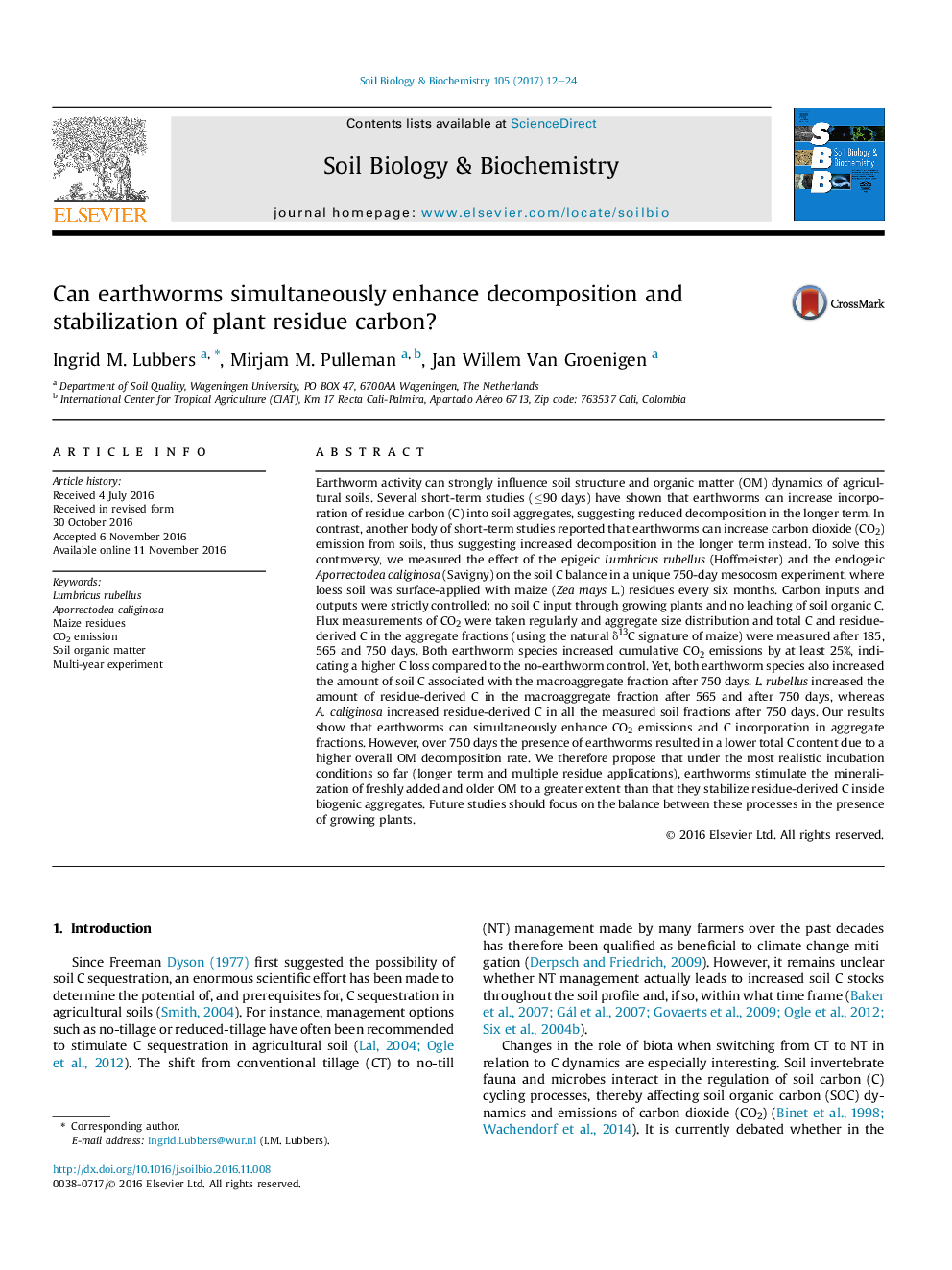| Article ID | Journal | Published Year | Pages | File Type |
|---|---|---|---|---|
| 5516498 | Soil Biology and Biochemistry | 2017 | 13 Pages |
â¢Earthworms increase cumulative CO2 emissions by at least 25%.â¢Earthworms increase the amount of soil C associated with the macroaggregate fraction.â¢Earthworms can thus simultaneously enhance CO2 emission and C incorporation.â¢Earthworm presence results in lower total C content due to higher OM decomposition.â¢Earthworms stimulate OM mineralization more than that they stabilize residue C.
Earthworm activity can strongly influence soil structure and organic matter (OM) dynamics of agricultural soils. Several short-term studies (â¤90 days) have shown that earthworms can increase incorporation of residue carbon (C) into soil aggregates, suggesting reduced decomposition in the longer term. In contrast, another body of short-term studies reported that earthworms can increase carbon dioxide (CO2) emission from soils, thus suggesting increased decomposition in the longer term instead. To solve this controversy, we measured the effect of the epigeic Lumbricus rubellus (Hoffmeister) and the endogeic Aporrectodea caliginosa (Savigny) on the soil C balance in a unique 750-day mesocosm experiment, where loess soil was surface-applied with maize (Zea mays L.) residues every six months. Carbon inputs and outputs were strictly controlled: no soil C input through growing plants and no leaching of soil organic C. Flux measurements of CO2 were taken regularly and aggregate size distribution and total C and residue-derived C in the aggregate fractions (using the natural δ13C signature of maize) were measured after 185, 565 and 750 days. Both earthworm species increased cumulative CO2 emissions by at least 25%, indicating a higher C loss compared to the no-earthworm control. Yet, both earthworm species also increased the amount of soil C associated with the macroaggregate fraction after 750 days. L. rubellus increased the amount of residue-derived C in the macroaggregate fraction after 565 and after 750 days, whereas A. caliginosa increased residue-derived C in all the measured soil fractions after 750 days. Our results show that earthworms can simultaneously enhance CO2 emissions and C incorporation in aggregate fractions. However, over 750 days the presence of earthworms resulted in a lower total C content due to a higher overall OM decomposition rate. We therefore propose that under the most realistic incubation conditions so far (longer term and multiple residue applications), earthworms stimulate the mineralization of freshly added and older OM to a greater extent than that they stabilize residue-derived C inside biogenic aggregates. Future studies should focus on the balance between these processes in the presence of growing plants.
